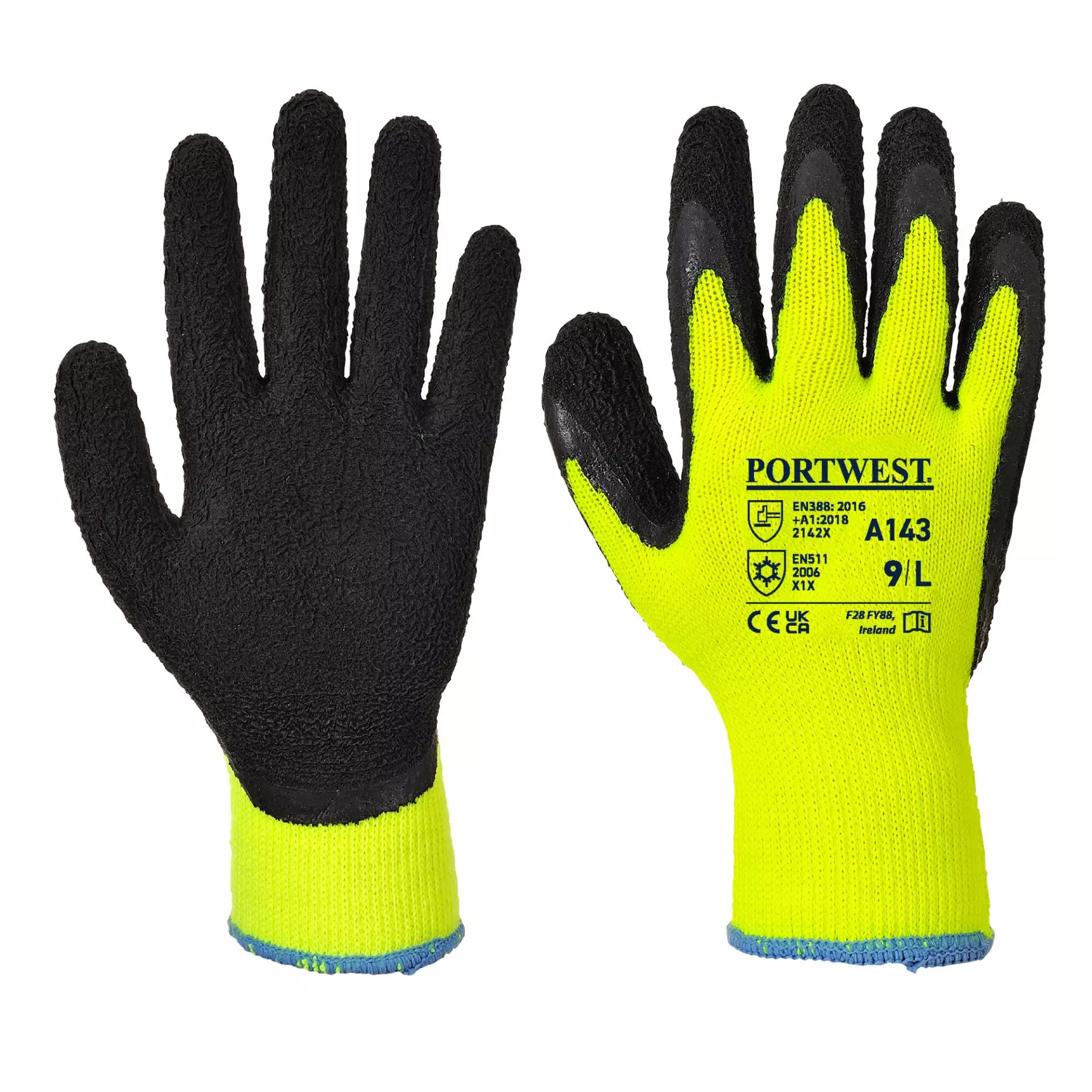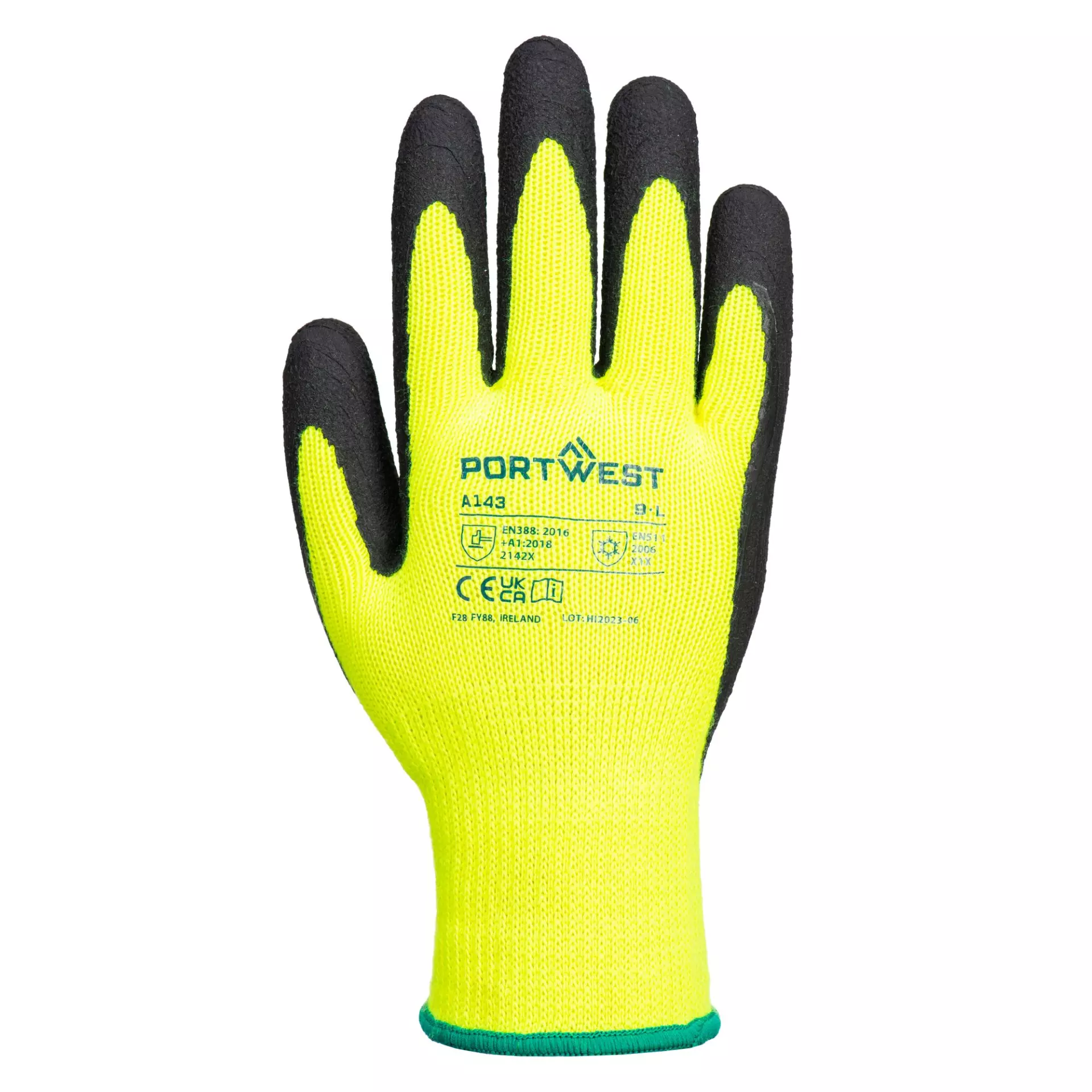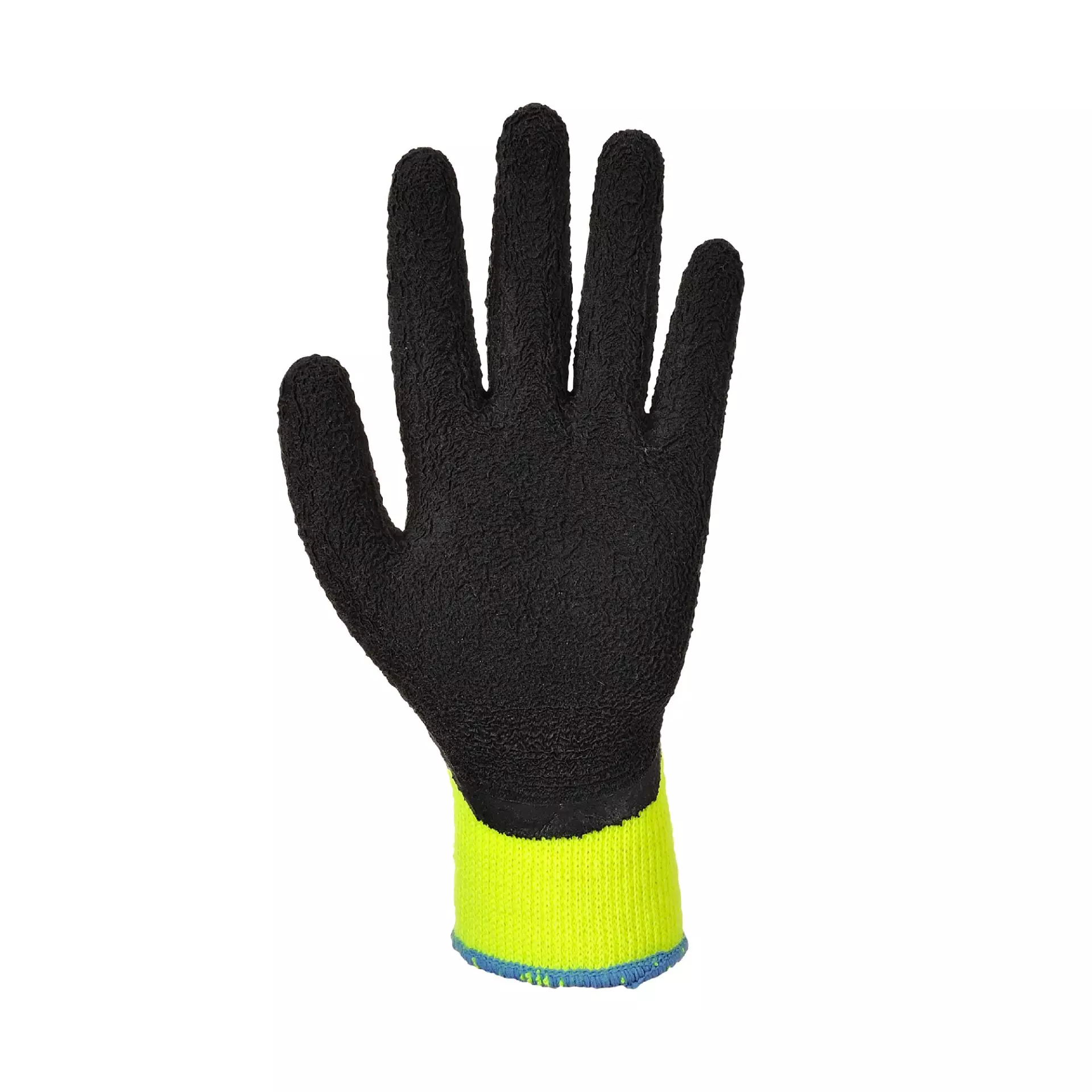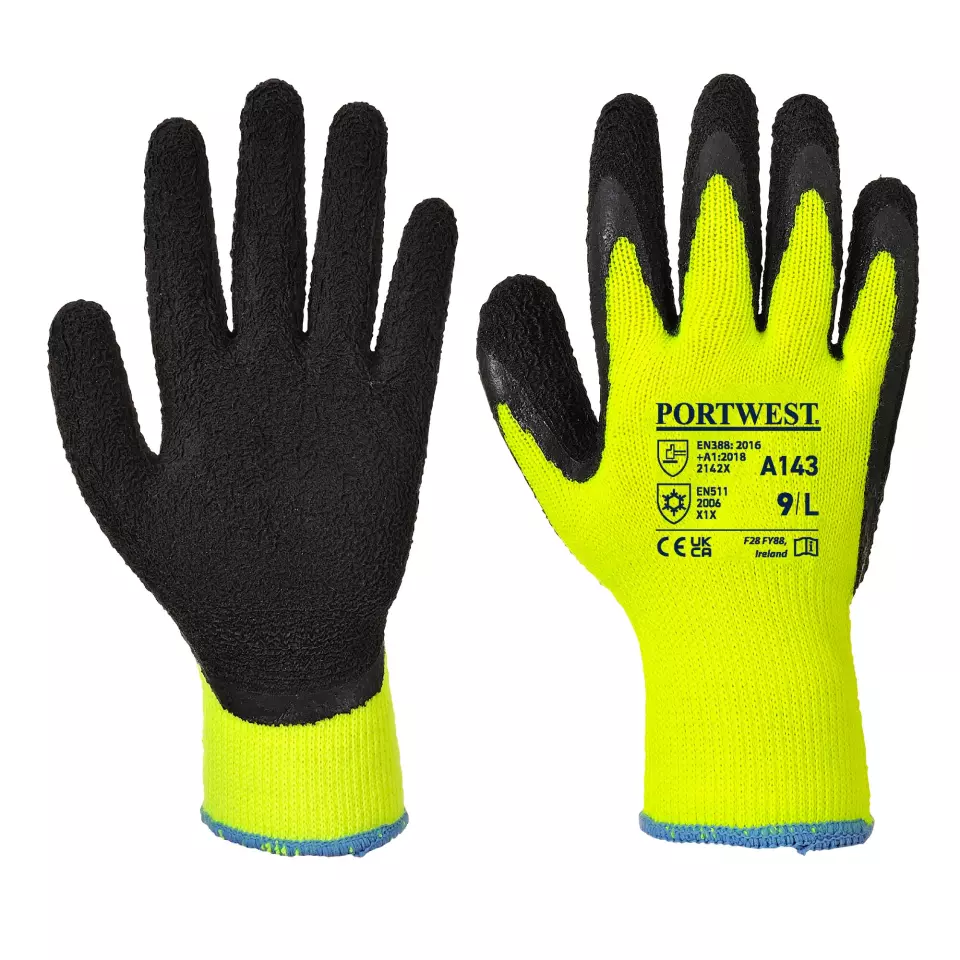


Features You'll Love

Palm Material · Latex, Foam

EN 388 · Tear Resistance Level 4, Puncture Resistance Level 2
Offers the highest level of protection against tearing, withstanding a strong force before ripping.
Withstands moderate force from sharp objects like heavy-duty splinters or wires.
Portwest
Thermal Soft Grip Glove, Yellow/Black, 12 pairs
Thermal Soft Grip Glove, Yellow/Black, 12 pairs
5 / 5
43,23 €
Price per 12 pairs
3,60 € / pair
Choose size
Shipping fee is 7,95 € for orders under 80,00 €
Features You'll Love

Palm Material · Latex, Foam

EN 388 · Tear Resistance Level 4, Puncture Resistance Level 2
Offers the highest level of protection against tearing, withstanding a strong force before ripping.
Withstands moderate force from sharp objects like heavy-duty splinters or wires.
Product description
Professional cold weather protection gloves featuring a 10-gauge acrylic liner with latex foam coating for superior grip performance in wet and dry conditions. The palm-dipped design enhances dexterity and ventilation while maintaining warmth in cold environments. These ergonomically designed gloves offer breathable, seamless construction with CE and UKCA certification for workplace safety compliance.
Product Features:
- Warm 10-gauge acrylic liner for cold protection
- Latex foam coating for excellent grip in wet and dry conditions
- Palm dipped to increase dexterity and ventilation
- Breathable seamless liner
- Ergonomically designed for comfort and ease of use
Recommended Applications:
- Cold environments
- Cold conditions applications
Standards:
- CE certified
- UKCA marked
- EN ISO 21420:2020 Dexterity 5
- EN 388:2016 + A1:2018 (2142X)
- EN 511:2006 (X1X)